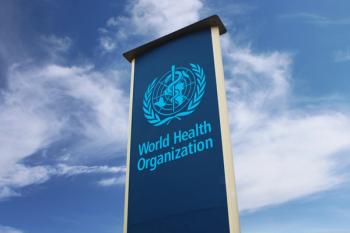
In Pancreatic DLBCL, Older Age, Distant Stage, Lack of Surgery Lead to Worse Outcomes
Surgery can be difficult in such cases of diffuse large B-cell lymphoma (DLBCL), but it leads to significant better outcomes, study authors said.
Systemic therapy and a timely diagnosis help improve survival rates among people with pancreatic
The study, a population-based analysis of patients in the United States, was
Pancreatic lymphomas are quite
Given the rarity of the cancer type, the study investigators wanted to better understand which factors were associated with patient outcomes. They used the
In terms of demographics, the database showed a wide range of age groups receive a pancreatic lymphoma diagnosis, including a half-dozen patients younger than age 30. However, 52.4% of the overall cohort was aged 60 and 79 years and 18.1% were 80 years or older. Additionally, nearly 6 in 10 patients in the cohort were male, and 85.2% were White patients, the authors found.
In terms of tumor characteristics, they said 44% of the cases with known stages were distant, which the authors considered to be a proxy for secondary pancreatic DLBCL. Thirty-three percent of cases with a known stage were regional, and 22% of cases were localized. Those latter 2 categories were considered to be proxies for primary pancreatic cancer, the authors said. In 9% of cases in the cohort, tumor stage was unknown.
A total of 288 patients in the cohort were deceased, the authors said, although the primary-site pancreatic cancer was only considered to be the cause of death in 25 of those cases.
“In pancreatic DLBCL, secondary involvement and regional involvement (in primary pancreatic DLBCL) were negative predictors of survival,” the authors said.
Other causes of death included primary cancers in other sites, as well as a host of comorbidities, such as
Overall, the 5-year observed survival rate was 46% (95% CI, 43.5%-48.3%), the authors found. Chemotherapy monotherapy was the most common treatment strategy (71%) of cases, and among those patients, the 1-year survival rate was 68% (95% CI, 65.3%-70.3%) and the 5-year survival rate was 48% (95% CI, 44.7%-50.5%), the authors said.
Patients who received both chemotherapy and surgery had better outcomes, with a 1-year survival rate of 96% (95% CI, 91.3%-99.9%) and a 5-year survival rate of 80% (95% CI, 71.4%-89.2%).
The authors said older age (55 years and older) and lack of surgery were negative predictors of survival. They said their report is the latest in a string of studies showing surgery improves outcomes.
Still, the study authors added that surgery is often complicated in this cancer type.
“Surgical resection of pancreatic lymphoma has remained a therapeutic challenge due to the large tumor size and high risk of postoperative pancreatic fistula,” they said.
The investigators said they hope their findings will help clinicians better understand the prognosis of patients with pancreatic DLBCL, and thus better counsel patients.
“We also anticipate that clinicians and pathologists consider primary pancreatic DLBCL in differentials while assessing specimens on fine needle aspiration cytology,” they concluded.
Reference
Ullah A, Lee KT, Malham K, et al. Pancreatic diffuse large B-cell lymphoma in the US population. Cureus. Published online June 2, 2023. doi:10.7759/cureus.39862
Newsletter
Stay ahead of policy, cost, and value—subscribe to AJMC for expert insights at the intersection of clinical care and health economics.













































